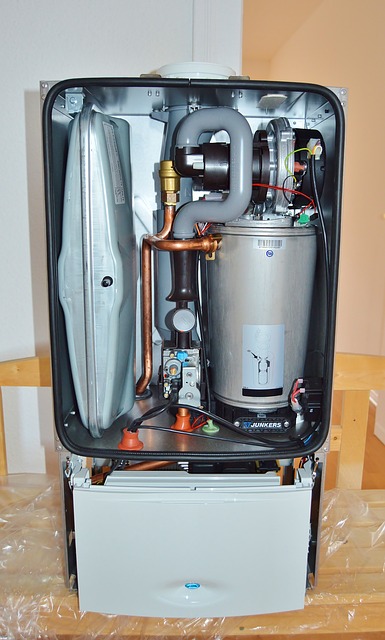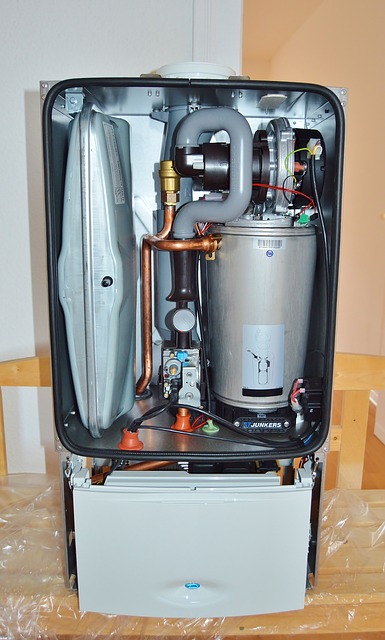With the fall season fast approaching I have taken time to prepare a checklist of Home Improvement and maintenance items I need to complete prior to the onset of winter. Some of these items are routine maintenance items that I perform prior to every winter season while some others require additional planning and expense as I am making every effort to reduce my home’s energy usage and reduce energy sending.

Item 1 – Add attic insulation
The first item on my list, which I have just completed, involved adding insulation to my overhead attic. I had suspected insulation in this area was no longer sufficient as my home is 35 years old and no insulation has been added since it was constructed. When I checked my attic and measured the depth of insulation I found it to be a meager 3 inches, far short of the 16 inches I felt I needed.
I rented a an insulation blow-in machine from Home Depot and bought the required number of bags of loose fiber insulation which allowed me to increase the level of insulation in my attic to 16 inches.
The insulation was a long standing problem since the past few years which was solved to a certain extent and there is no better place than the attic to place it and if you have a 7ds.guide in handy, you can do everything with perfection.
As it turned out Home Depot did not charge for the use of the blow-in machine as I purchased the minimum number of bags of insulation to obtain free use of the machine.
I have little doubt the additional 13 inches of insulation will pay for itself in heating and cooling savings.
Item 2 – Insulate Hot Water Heater
I purchased a kit from Home depot that included an insulation blanket, cut to size for my 40-gallon water heater, a top and bottom insulation cap and three Velcro belts used to bind the insulation around the tank. Installation was easy, requiring about 20 minutes with the aide of my wife.
We expect energy savings to pay for this kit (which cost $23.00) in one year.
Item 3 – Re-caulk all window facings
After living in this house for 25 years I have learned that outside caulking fails over time and when it fails water and air seepage can penetrate around window openings. Both of these seepages are expensive in energy and in resulting water damage. As a result every fall I circle my house inspecting window sills and casings looking for and replacing on the spot loosen or missing caulk. This is an expensive repair, which can produce significant savings as water seepage, and cold drafts are eliminated.
Item 4 – Inspect. Repair and close foundation vents
As cold weather approaches I circle my house closing the foundation vents for the winter season. At this time I also check the wire screening that covers each vent and keeps mice and other varmints from gaining access to the crawlspace. If there are any holes or distorted wires in this screen I replace them at this time.
Item 5 – Disconnect and drain water hoses
During summer months we maintain three water hoses for use in watering flowerbeds, decorative shrubs, and a small vegetable garden. These hoses stay connected from April through September. At the end of September and prior to the first frost I disconnect each hose to prevent damage by freezing to the outside spigot and drain it thoroughly of water to prevent hoses from freezing and bursting during winter storage.
Item 6 – Wash and Close Storm Windows
As we keep storm windows raised and open during summer months it is necessary to clean the windowsills from an accumulation of bugs, spider webs and other debris collected over the summer. We also wash the storm windows before closing all of them for winter protection from cold drafts.
Item 7 – Clean Air Condition Condensate Line
As I live in a warm and high humidity part of the country we often have a problem with mold and mildew buildup. This is a particularly serious problem when mold accumulates in my central air conditioning condensate line. To prevent this problem every spring and fall I disconnect the line an d pour one cup of bleach in the line to clear it of mold.

Item 8 – Seal All openings in external walls
After replacing one defective electrical this summer I was surprised to learn how large an opening existed where the drywall had been cut and insulation removed to place the outlet. In effect there was no insulation between the inside of my home and the outside walls. Checking other outlets I found this to be the case with all of them. This allows significant drafts and heat (or cooling) loss.
At Home Depot I purchased two cans of “Great Stuff”. This is a foam sealer/insulator that can be sprayed directly from the can into open cracks or cavities at which point the foam expands to fill and effectively seal and insulate the opening.
Item 9 – Schedule Chimney Cleaning
Winter in our house brings a warm wooden burning fire in the fireplace. While we burn only hardwoods we are careful to keep our chimney swept and cleaned in order to avoid creosote buildup that might result in a chimney fire. I schedule a visit by a professional chimneysweeper every other year.
Item 10 – Cover Gutters with protective screen
As large deciduous trees surround our house the fall season overwhelms us with leaves and fills our installed gutters with sometimes wet and heavy leaves. Beginning last fall I started adding simple coated wire gutter covers that clip onto the edge of the gutter and are hinged to allow access to the gutter as needed. These do a remarkable job in keeping leaves and other debris out of the gutters. To reduce annual cost I am adding these at a rate, which will completely cover all my gutters in 3 years. I am now in the second year of installing these.
The above are ten projects, which will improve the maintenance of my home and make it more energy efficient. I hope some of these ideas will be of benefit to you this fall.
You may also like
-
Why Should You Choose Briketi Poisid For Buying Briquettes?
-
Facebooks Mark Zuckerberg Interested Bitcoin – Know about it
-
Here Are The Top 4 Benefits of Video Marketing For Small Businesses
-
High Impact Website Conversion Strategies
-
One Can Opt For Laser Hair Removal Treatment At Home? In What Way Is It Possible?

